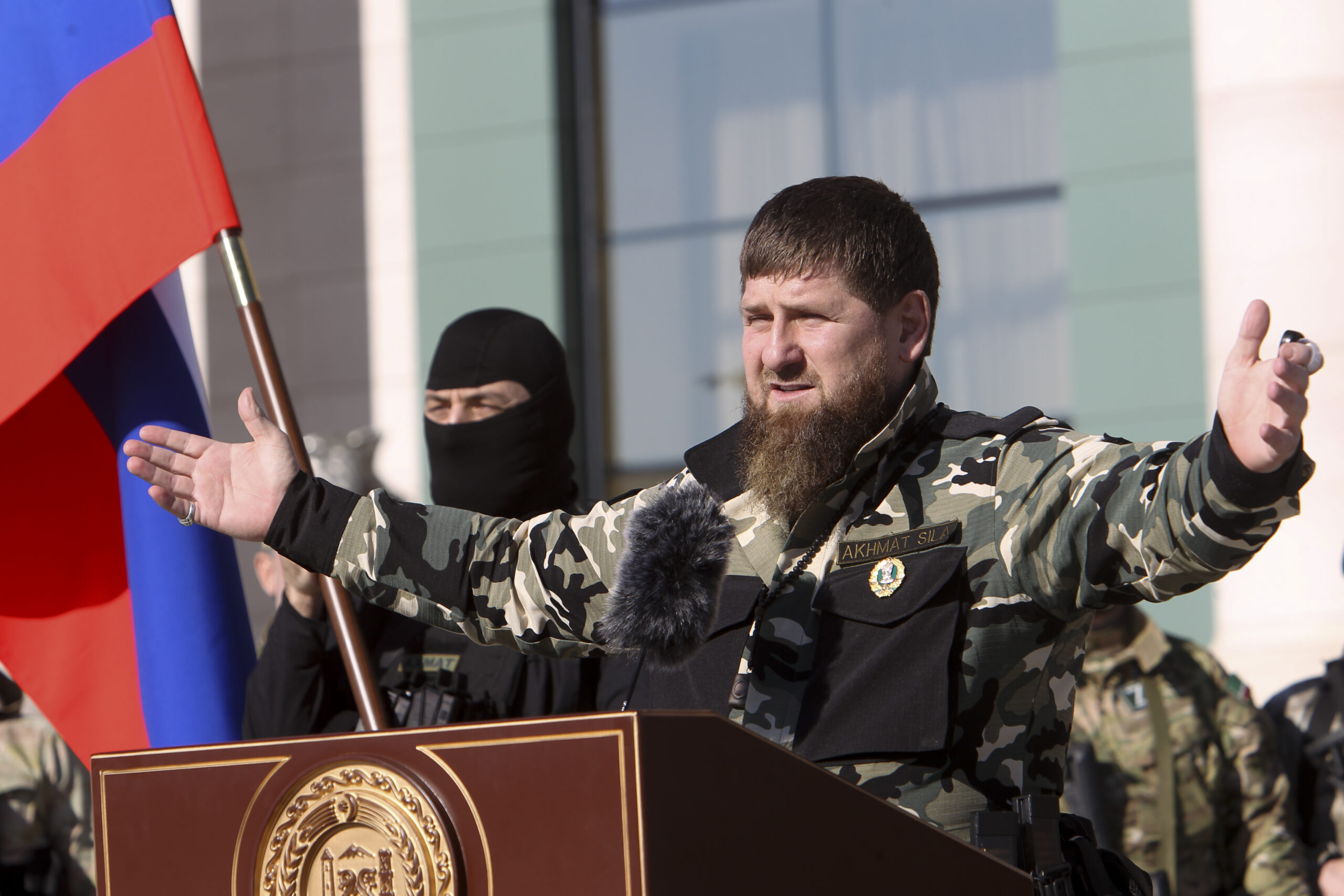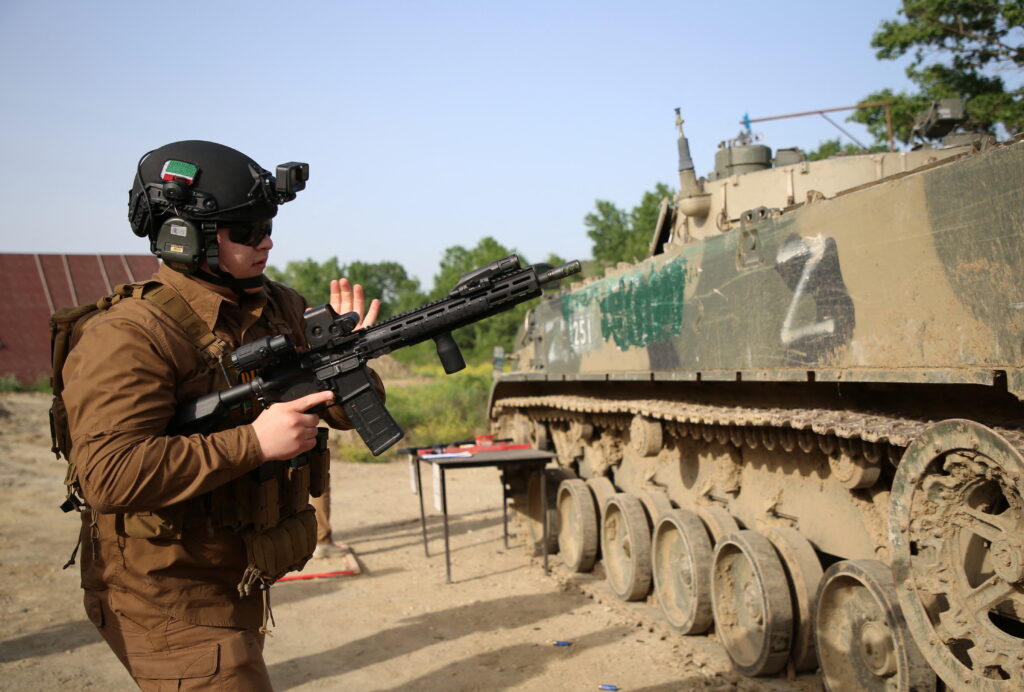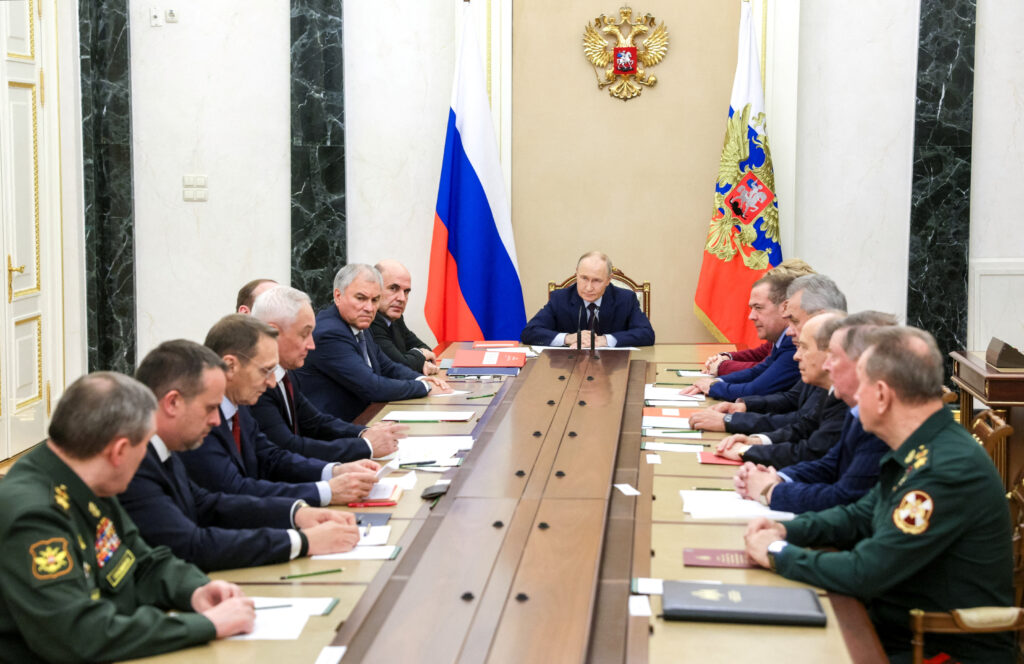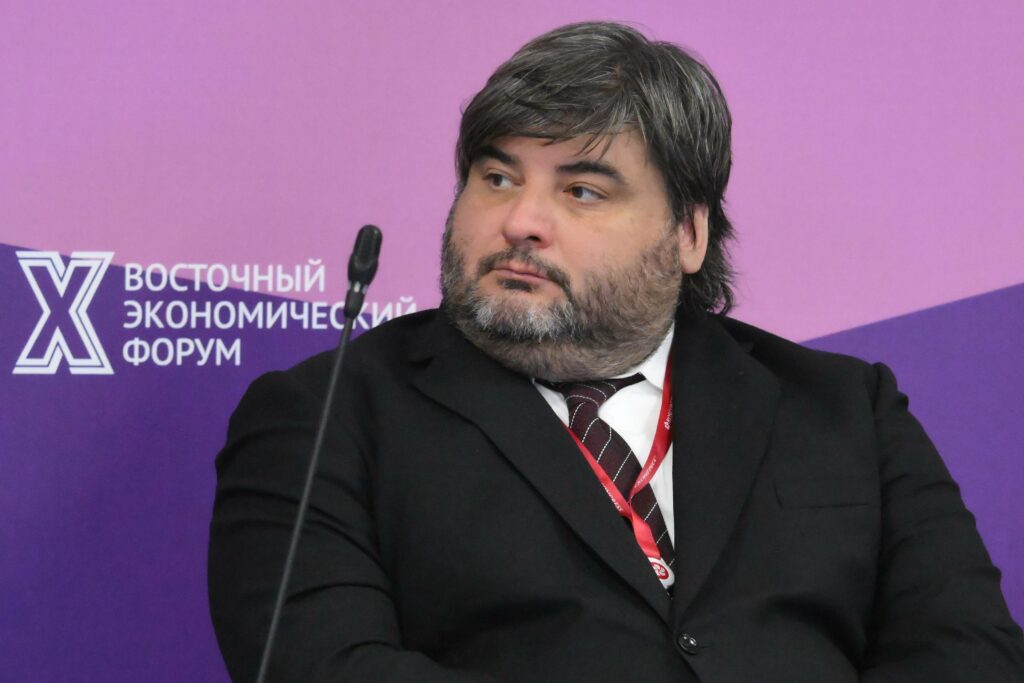Debates over Kadyrov’s health and the fate of his regime if he dies have returned. However, discussions have generally failed to account for how the Kadyrov regime is structured, or how it actually maintains stability. This is not a matter of the regime seeking to legitimize itself; this is a matter of power and control.
The Kadyrov regime relies on three pillars: use of force, which can be broken down chronologically by the monopolization of violence and typologically by actor type; federal support, which differentiates between stemming from Putin and from the other federal officials; and financial means, separated into how wealth is acquired and how it is stored. This piece concludes by demonstrating how these stabilizers are interconnected.
Force
The Kadyrov regime’s monopoly on the use of force in Chechnya is the cornerstone of its stability. Beyond its initial suppression of the military campaigns of Ichkeria and Imarat Kavkaz, it has made Kadyrov the lone potential ruler from his generation and created an oppressive atmosphere throughout the region.
Chronologically, Kadyrov’s capability to use force developed over three distinct periods. During the first phase (2000−2007), he established his foothold in the then-competitive field of paramilitary groups in Chechnya. The family’s personal army, the kadyrovtsy, precedes Ramzan and was initially placed under the Interior Ministry’s (MVD) patronage. He did not gain command over them until his father was installed by President Putin as the head of Chechnya. At this point, Ramzan was responsible for his father’s protection—a task that he failed. Phase One ends with Ramzan assuming de jure control of Chechnya.
During the second phase (2007−2015), Ramzan consolidated a monopoly on the use of force in Chechnya. Predominantly, he did so by eliminating his main rivals. Through assassinations and legal dissolutions, Movladi Baysarov and his «Gorets» unit were eliminated in 2006, Said-Magomed Kakiev and «Zapad» battalion in 2007−2008, and the Yamadaev brothers and «Vostok» battalion in 2008−2009. The consolidation of force was also achieved by eroding the insurgency until its effectual defeat in 2015. Finally, famously, Kadyrov informed federal security officials that they would be killed for operating in Chechnya without his permission.
The third phase (2015-present) features the expansion of Kadyrov’s capabilities beyond a monopoly on violence, targeting perceived sociocultural threats and abandoning geographic limitations. Epitomizing the former, in 2017, the kadyrovtsy attempted to purge Chechnya of the LGBTQ community. Geographically, while Kadyrov ordered assassinations outside Chechnya well before 2015, there has been a noticeable uptick in the kadyrovtsy intimidating, assaulting, abducting, and murdering around Russia and beyond, targeting Chechens and the regime’s critics.
Although its effects are still emergent, Russia’s invasion of Ukraine potentially signifies the start of a fourth phase in Kadyrov’s use of force. The basis for this assessment is the emergence of new units with a completely different operational purpose, one aligned with military efforts in Ukraine, rather than subduing Chechnya.
Kadyrov’s forces can be generally separated into two groups, formal and informal, which can subsequently be delineated based on chain-of-command and unit type. The formal kadyrovtsy operate within official chains of command. Rosgvardia consists of both the original units—making up the core of Kadyrov’s forces across the MVD, OMON, and SOBR units—plus the recently formed Baysangur Benoevskii battalion and «Akhmat» regiments. Forces of the Ministry of Defense within the kadyrovtsy’s ranks are new, comprising the infamous Akhmat Group, Sheikh Mansur battalion, and «Akhmat» battalions.
Informally, the kadyrovtsy have both «former» officials and co-opted members of organized crime. The literal former have engaged in regional plots, while the latter have participated in assassination plans in Vienna, Kyiv, and Istanbul, amongst other places. The informality of these actors means they are significantly more difficult to identify, as they can only be tracked by event, rather than any chain-of-command.
Federal support
The Kadyrov regime’s backing from Moscow is split between that of Putin and other officials. Putin’s support can be explained by two dynamics, while that of the others is essentially circumstantial.
Putin’s support is maintained through two dynamics: the paternalistic relationship between himself and the Chechen governor and the «Kadyrov conundrum.» The familial dynamic between the President of Russia and Ramzan Kadyrov, be it precisely paternal, avuncular, or more broadly to a clan elder, has been thoroughly discussed and analyzed. Certainly, it is not the typical federalized relationship between president and governor, adding a less formal appearance and granting Kadyrov greater leeway to operate as he wishes. This has consequently cemented a dynastic tradition in Chechnya under the current regime.
More fundamentally defining the relationship is the «Kadyrov conundrum,» a contextualized security-legitimacy paradox stemming from the combination of integrating a warlord and succession dilemmas. Concisely, Putin started and ended the Chechen conflict to solidify his own legitimacy, succeeding where Boris Yeltsin failed and supposedly avenging the 1999 apartment bombings. The Kadyrov family abandoned independent Chechnya to join Putin, essentially ending the war by taking their troops with them. As a result, the Kadyrovs guaranteed the republic’s stability. After his father’s death, Ramzan is the only one to maintain the relationship, having also eliminated alternatives to his rule. Thus, Putin must guarantee Kadyrov’s hold on power, substantially altering the conventional federalist power balance.
As for the rest of the federal officials, their support is less substantiated. Generally, Kadyrov alienated many powerful siloviki and oligarchs through assassinating his rivals (i.e., those under their patronage) and his prominent critics, like Boris Nemtsov. However, the pressures of the ongoing war effort have reasonably assuaged long-held inter-elite dislike for the Chechen warlord, although the past two years have been marked with periodic sparring. The resolution of Kadyrov and Prigozhin’s dispute with the security block, in which Kadyrov stopped his antagonization and Prigozhin was killed, further suspended prior conflicts. The question remains about the sincerity of this current amicability and how long it will last.
Financial
While Kadyrov has previously claimed that «Allah gives» him his wealth, this is demonstrably false. His wealth is acquired and stored through a variety of channels.
The regime’s wealth has mostly been acquired through federal funds. While these have fluctuated over the years, Kadyrov has aimed to return them to the levels at the height of the insurgency, claiming in January 2022 that the region could not survive a month without Moscow’s financial aid. These financial flows have also heavily enabled embezzlement by the regime. Early estimates, before Kadyrov even became head of the republic, claimed he took one-third of all federal funds for himself. As he gained power, he also began to extort money from the public, and businesses, through contributions to the Akhmat Kadyrov Fund (AKF), his personal slush fund for the majority of his official and personal activities. Kadyrov and his close associates have also targeted businessmen throughout Russia to «mysteriously» acquire some of their assets. Some of this funding is further utilized to buy off subordinates through regional governmental contracts. The dynamic nature of these channels have led Kadyrov to search for more stable financial means.
Due to the war, the regime has gained new stakes in the federal economy, namely the «Ilyich» metallurgy plant in occupied Mariupol and the Russian branch of yogurt company Danone. Further, new government contracts for the war efforts have massively increased financial flows for the manufacturing of «jihad-machines» and for the Russian Spetsnaz University. These augment and diversify the monetary flows for Kadyrov.
The regime has stored and utilized this wealth in a variety of ways. The most obvious storage for Kadyrov’s wealth is in his various properties around Chechnya, Moscow, and in Dubai, as well as, less permanently, the family’s extravagant lifestyle. The liquid means of storing his money is the AKF, which has in turn financed attempts to buy support from the general populace, religious figures, MMA fighters, and more. The AKF has additionally invested in several businesses: Megastroyinvest, Chechen Mineral Waters, «Groznyi-avia,» and car dealership «Lider-avto.» However, the AKF has also funded Kadyrov’s personal hobbies and family businesses.
These means of acquiring and storing wealth for the Kadyrov regime allow it to try to mask its financial sources while promoting an image of opulence that is used to entice officials of the otherwise economically troubled region to lend their support to the regime, in hopes that they might then be rewarded.
Interconnectedness
The regime’s capability for the use of force, federal support, and financial means are all related. The development of force simultaneously helps and hinders federal support, providing stability while undermining the Kremlin’s authority in Chechnya. Federal support blatantly adds to financial means via subsidies, while financial means then enables the use of force.
This structure of the Kadyrov regime—even more than any alleged conferment by Moscow—will determine how power is attributed in a post-Kadyrov Chechnya. Accordingly, this means that the regime’s stakeholders, both established and new, are the actors to watch going forward.










